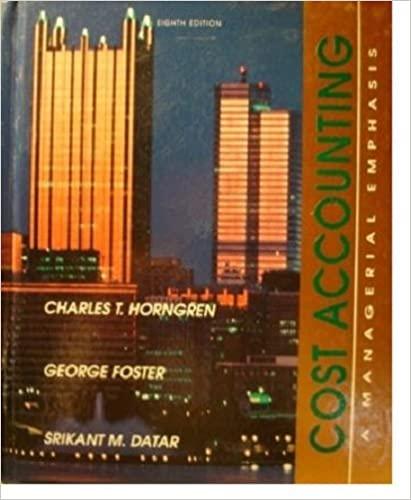Answered step by step
Verified Expert Solution
Question
1 Approved Answer
Beauville Furniture Corporation produces sofas, recliners, and lounge chairs. Beauville is located in a medium - sized community in the southeastern part of the United
Beauville Furniture Corporation produces sofas, recliners, and lounge chairs. Beauville is located
in a mediumsized community in the southeastern part of the United States. It is a major
employer in the community. In fact, the economic wellbeing of the community is tied very
strongly to Beauville. Beauville operates a sawmill, a fabric plant, and a furniture plant in the
same community.
Fabric Plant
The fabric plant is responsible for producing the fabric that is used by the furniture plant.
To produce three totally different fabrics identified by fabric ID codes FB FB and FB
respectively the plant has three separate production operationsone for each fabric. Thus,
production of all three fabrics occurs at the same time in different locations in the plant.
Each fabric's production operation has two processes:
Weaving and pattern process
a In the weaving and pattern process, yarn is used to create yards of fabric with
different designs.
Coloring and bolting process
a In the next process, the fabric is dyed, cut into yard sections, and wrapped
around cardboard rods to form yard bolts.
b The bolts are transported by forklift to the furniture plant's Receiving Department.
All of the output of the fabric plant is used by the furniture plant to produce the sofas and
chairs
For accounting purposes, the fabric is transferred at cost to the furniture plant.
Jennifer K Howard. All rights reserved.
Furniture Plant
The furniture plant produces orders for customers on a specialorder basis. The customers
specify the quantity, style, fabric, lumber grade, and pattern. Typically, jobs are large involving
at least units
The plant has two production departments:
Cutting
a In the Cutting Department, the fabric and wooden frame components are sized
and cut.
b Other components are purchased from external suppliers and are removed from
stores as needed for assembly.
c After the fabric and wooden components are finished for the entire job, they are
moved to the Assembly Department
Assembly
a The Assembly Department takes the individual components and assembles the
sofas or chairs
Problem
Beauville Furniture has been in business for over two decades and has a good reputation.
However, during the past five years, Beauville experienced eroding profits and declining sales.
Bids were increasingly lost even aggressive bids on the more popular models. Yet, the
company was winning bids on some of the moredifficulttoproduce items.
Lance Hays, the owner and manager, was frustrated. He simply could not understand how some
of his competitors could sell for such low prices. On a common sofa job involving units,
Beauville's bids were running $ per unit, or $ per job more than the winning bids on
average Yet, on the more difficult items, Beauville's bids were running about $ per unit less
than the next closest bid.
Gisela Berling, vice president of finance, was assigned the task of preparing a cost analysis of the
company's product lines. Lance wanted to know if the company's costs were excessive. Perhaps
the company was being wasteful, and it was simply costing more to produce furniture than it was
costing its competitors.
Gisela prepared herself by reading recent literature on cost management and product costing and
attending several conferences that explored the same issues. She then reviewed the costing
Jennifer K Howard. All rights reserved.
procedures of the company's mill and two plants and did a preliminary assessment of their
soundness.
Preliminary assessment
The two plants used normal costing systems.
The fabric plant used process costing, and the furniture plant used joborder costing.
Both plants used plantwide overhead rates based on direct labor hours.
Based on her initial reviews, she concluded that the costing procedures for the fabric plant were
satisfactory. Essentially, there was no evidence of product diversity.
A statistical analysis revealed that about percent of the variability in the plant's overhead cost
could be explained by direct labor hours. Thus, the use of a plantwide overhead rate based on
direct labor hours seemed justified.
What did concern her, though, was the material waste that she observed in the plant. Maybe a
standard cost system would be useful for increasing the overall cost efficiency of the plant.
Consequently, as part of her report to Lance, she decided to include a description of the fabric
plant's costing proceduresat least for one of the fabric types FB She also decided to
develop a standard cost sheet for the chosen fabric FB
The furniture plant, however, was a more difficult matter. Product diversity was present and
could be causing some distortions in product costs. Furthermore, statistical analysis revealed that
only about percent of the variability in overhead cost was explained by the direct labor hours.
She decided that additional analysis was needed so that a sound product costi
Step by Step Solution
There are 3 Steps involved in it
Step: 1

Get Instant Access to Expert-Tailored Solutions
See step-by-step solutions with expert insights and AI powered tools for academic success
Step: 2

Step: 3

Ace Your Homework with AI
Get the answers you need in no time with our AI-driven, step-by-step assistance
Get Started


